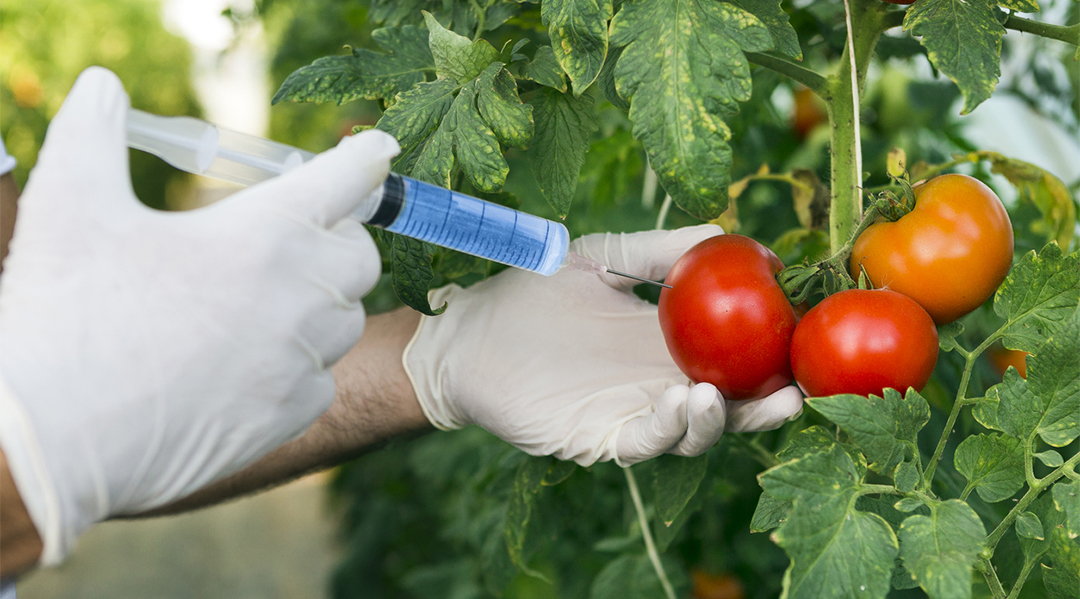Lateral Flow Strip Test for GMO Detection
The lateral flow strip test is a simple yet powerful tool used to detect genetically modified organisms (GMOs) in agricultural and forestry products. This method relies on the principle of antigen-antibody interactions, where specific antibodies are designed to bind with proteins unique to certain GMO varieties.
This technique offers a rapid, cost-effective way to screen for the presence of known GMO species without the need for extensive laboratory equipment or long processing times. It is widely used in quality control processes, compliance audits, and research activities within the agriculture and forestry sectors.
The lateral flow strip test has several advantages over more complex methods such as PCR (Polymerase Chain Reaction). It provides quick results, typically within minutes, which is crucial for timely decision-making. Moreover, it requires minimal training to operate, making it accessible across various levels of expertise in a lab setting.
However, while lateral flow strips are convenient, they should not be considered the final word on GMO presence but rather as part of a broader testing strategy that includes confirmatory tests like PCR. The lateral flow strip serves more as an initial screening tool to identify potential positives for further verification.
In agriculture and forestry, where compliance with international standards is critical, the lateral flow test plays a key role in ensuring product integrity and traceability. Compliance officers often rely on this method during routine inspections or when addressing consumer concerns about genetically modified content in products.
The use of lateral flow strips for GMO detection aligns with international standards such as ISO 15195:2003, which specifies the performance requirements and test methods for lateral flow immunochromatographic devices. Adherence to these guidelines ensures that tests conducted are accurate and reliable across different laboratories.
For quality managers in this sector, implementing a robust GMO testing program using lateral flow strips can significantly enhance operational efficiency by minimizing delays associated with prolonged testing times. This approach also helps maintain brand reputation and customer trust through adherence to regulatory requirements.
Why It Matters
The importance of accurate GMO detection cannot be overstated, especially in industries that are increasingly focused on transparency regarding the origin and composition of their products. Understanding why this testing is crucial can help stakeholders appreciate its value beyond just technical aspects.
GMOs have been part of agricultural practices for over two decades now; however, there remains significant debate around their environmental impact and safety concerns. Regulatory bodies worldwide continue to monitor these developments closely.
In the context of international trade agreements, compliance with GMO labeling regulations is essential to avoid disputes and ensure smooth transactions between countries.
For consumers, knowing whether their food contains genetically modified ingredients can influence purchasing decisions significantly. Reliable testing methods like lateral flow strips contribute to building this confidence by providing clear information about product contents.
In research settings, especially those exploring new GMO varieties or studying gene flow between crops, precise detection tools are vital for gathering accurate data and drawing valid conclusions.
By leveraging reliable technologies such as lateral flow strips, industries can better navigate these challenges while maintaining high standards of quality assurance. This not only bolsters business operations but also contributes positively to public health and environmental sustainability efforts.
Scope and Methodology
The scope of a lateral flow strip test for GMO detection encompasses several key areas, each contributing to the overall accuracy and reliability of results. The methodology involves preparation of samples, application onto the test device, interpretation of results, and reporting findings.
Sample Preparation: Before conducting the test, it is necessary to prepare the sample properly according to specific protocols outlined by relevant standards (e.g., ISO 15195:2003). This may involve dilution if needed or extraction processes depending on the nature of the sample.
Sampling Application: The prepared sample is then applied directly onto one end of the lateral flow strip. Care must be taken to ensure that sufficient volume is used and that it wicks through the membrane correctly.
Result Interpretation: Results are typically visible within a few minutes after placing the sample on the device. A line or lines appear indicating either positive or negative results based on predetermined thresholds related to expected levels of target antigens.
Reporting Findings: Once interpreted, findings should be recorded accurately and reported according to internal procedures or external requirements such as those set by regulatory authorities.
Quality and Reliability Assurance
To ensure that lateral flow strip tests for GMO detection meet high standards of quality and reliability, several measures are employed throughout the testing process. These include proper calibration of equipment, consistent sample preparation techniques, and rigorous validation protocols.
Calibration: Ensuring that all instruments used in conjunction with lateral flow strips are correctly calibrated is fundamental to obtaining accurate results. This includes checking reagents for potency before use and calibrating any automated systems involved in the process.
Sample Preparation Consistency: Variability in how samples are prepared can lead to inconsistent test outcomes. Therefore, strict adherence to standard operating procedures (SOPs) is crucial here. This includes using appropriate volumes of reagents and ensuring uniform mixing when applicable.
Validation Protocols: Regular validation exercises should be conducted to verify the performance characteristics of lateral flow strips against known standards. This helps identify any drift in sensitivity or specificity over time due to factors like storage conditions or usage frequency.
In addition to these technical considerations, continuous training and education of personnel involved in conducting these tests are equally important components of maintaining quality assurance practices. By fostering a culture of excellence and rigor within the organization, companies can further enhance their reputation as leaders in sustainable agricultural practices.





